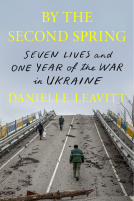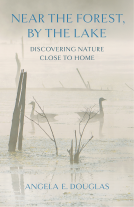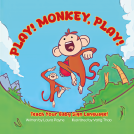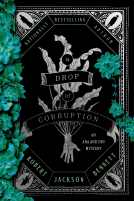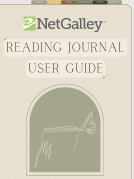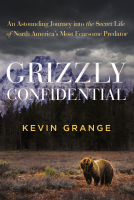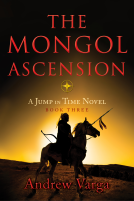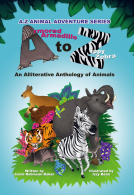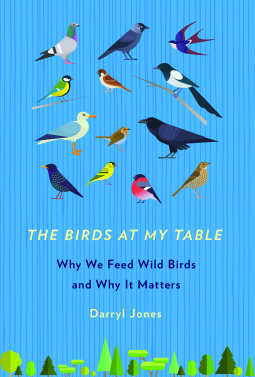
The Birds at My Table
Why We Feed Wild Birds and Why It Matters
by Darryl Jones
This title was previously available on NetGalley and is now archived.
Send NetGalley books directly to your Kindle or Kindle app
1
To read on a Kindle or Kindle app, please add kindle@netgalley.com as an approved email address to receive files in your Amazon account. Click here for step-by-step instructions.
2
Also find your Kindle email address within your Amazon account, and enter it here.
Pub Date Mar 15 2018 | Archive Date Mar 15 2018
Cornell University Press | Comstock Publishing Associates
Description
Darryl Jones is fascinated by bird feeders. Not the containers supplying food to our winged friends, but the people who fill the containers.
Why do people do this? Jones asks in The Birds at My Table. Does the food even benefit the birds? What are the unintended consequences of providing additional food to our winged friends?
Jones takes us on a wild flight through the history of bird feeding. He pinpoints the highs and lows of the practice. And he ponders this odd but seriously popular form of interaction between humans and wild animals. Most important, he points out that we know very little about the impact of feeding birds despite millions of people doing it every day.
Unerringly, Jones digs at the deeper issues and questions, and he raises our awareness of the things we don’t yet know and why we really should. Using the latest scientific findings, The Birds at My Table takes a global swoop from 30,000 feet down to the backyard bird feeder and pushes our understanding of the many aspects of bird feeding back up to new heights.
Advance Praise
“The Birds at My Table is a passionate discussion of the complex ways that bird feeding matters. The author has read every scientific study of bird feeding and visited bird feeders in Australia, New Zealand, the United Kingdom, and the United States. He brings his own interest in feeding birds to the table, too. The Birds at My Table is an impressively comprehensive study of why people feed birds and how birds are affected by this practice. This book will be a benchmark for those interested in the social history and ecological effects of bird feeding. Jones convincingly shows that bird feeding is a global practice with ethical implications.”—Jeff Karnicky, author of Scarlet Experiment: Birds and Humans in America
“The Birds at My Table is a delightful and informative read by a keen naturalist and gifted scholar that will deepen your understanding of birds and why so many of us are compelled to feed them.”—John M. Marzluff, Professor of Wildlife Science and author of Welcome to Subirdia
Available Editions
| EDITION | Other Format |
| ISBN | 9781501710780 |
| PRICE | $19.95 (USD) |
Links
Featured Reviews
 catherine h, Reviewer
catherine h, Reviewer
I love feeding the birds (and deer and whatever else happens to wander in to share a meal!) all my neighbors do, too! I enjoyed reading this book, even it based in Australia! It's nice to know folks there feed their critters, too! I liked the idea of finding a kindred spirit half a world away from me! But the author does cover the global interest in feeding birds in other countries, which I enjoyed reading about! I was interested in reading about the negative effects of feeding the birds and the debate about year round feeding, disease spreading from feeders, etc... I hadn't really given much thought to those issues other than to be sure the birdbaths were cleaned daily. Gave me some food for thought. If you like to feed the birds, you'll enjoy this book. Its pretty informative.
 Ewa B, Reviewer
Ewa B, Reviewer
Thank you to NetGalley for a free e-copy of this book in exchange for a review.
This was a great read.
In this book, Darryl Jones discusses bird feeding practices all around the world. His observations and anecdotes are substantiated with research and studies. Sometimes the studies are a bit much, but there is a lot of interesting facts in there, so it's worth persevering through the more academic parts of the book. The anecdotes, however, are fascinating. I loved the story about a lady who decided to consider her garden from the point of view of a bird and added some shrubs in which birds could hide before/ after feeding.
Other points of interst: historical development of bird feeding practices; contemporary changes in bird feeding; the perennial issue of "should the birds be fed outside winter or not"; differences in feeding around the world and/ or in feeding different species. While our most common association with bird feeding is giving the birds some grains (or maybe, inappropriately, pieces of bread), there are some species which are fed with fresh fruit... or raw meat.
There is also an interesting fragment concerning the industry of bird food, and changes therein over the last decades; and the questionf of whether feeding can be actually detrimental to birds (and, especially, nestlings) returns time and again. (The answer seems to be: not really, nestlings usually are fed better quality food, i.e., worms and insects, even if the parents eat grain.)
But overall, what shines through is the fact that the author and the people he interviews are genuinely interested and concerned with the welfare of birds. And the stories they share are truly fascinating and inspirational.
I'm very happy that I have read this book. I hope it will be translated into Polish at some point. I would love to have it on my shelf.
 Gaby F, Educator
Gaby F, Educator
Fascinating Insight into the World of Bird Feeding:
This book should come with a disclaimer for people who are not yet fully engaged in feeding wild birds. Once I started reading this book, I was fascinated by Daryl Jones' insight into the universal and complex human behavior of feeding wild birds. Half way through the book, I found myself putting up a bird feeder in my own back yard, being worried about the house sparrow population in Germany, and looking up the bird species mentioned in this book. Through my online search I found myself stumbling onto live bird feeder cams, websites of bird wildlife preserves, and a podcast of Birds and the City, an interview with Darryl Jones on Australia's ABC . With years of bird research and related travels all around the world on his back, Darryl Jones brilliantly explores the motivation behind wild bird feeding and possible consequences of this human intervention. He also asks fundamental questions about the necessity of bird feeding in the wintertime or year-round, the kinds of bird food supplied, as well as bird health and breeding issues related to feeding. It seems that all the people engaged in bird feeding, be it in their own backyard or in a wildlife preserve, make a difference for the birds. And while most birds luckily are not completely dependent on a constant supply of supplemental food, we get hooked into their fascinating world.
 Cherry-Ann L, Reviewer
Cherry-Ann L, Reviewer
A well written educative and informative book that bird lovers and even some biologist would fall in love with, it brings to light their daily routines, tells of the encroachment of man on their habitat and their rehabilitation. This book goes into details about the various types of birds, their environment, and feeding patterns, it enlightens about the fast and damaging changes to their existence. It is interesting and filled with a wealth of information about birds, it is truly a bird lover's delight.
 Helen C, Reviewer
Helen C, Reviewer
It seems like such a simple thing, feeding the birds. Beyond the casual tossing of leftover picnic crumbs to the ducks, Professor Darryl Jones looks at those who are more deliberate -- those who maintain backyard bird feeders. He wonders whether the regular feeding of birds has an effect and what kind of effect, on both the birds and the humans who feed them.
While he does some original research, for the most part he collects and analyzes the studies that have been done. Those studies have been a varied lot, done by schools and industry, specifically addressing bird feeding questions or often only touching on bird feeding on the way to answering some other question. What he discovers is surprising. For instance, even when neighborhood birds are fed regularly for years, they seem little affected when the human supplied food suddenly stops. It seems that birds rarely rely on bird feeders, even if they take advantage of them. Birds seemed to use human supplied food only rarely for feeding their nestlings, preferring insects and grubs.
On the other hand, backyard bird feeders turned out to be ground zero for spreading bird diseases quickly. Because many types of birds might feed at a single feeder, cross-contamination is a real threat.
Although the discussion of the studies is often more detailed than necessary for this generalist reader, I found Jones's discoveries fascinating and unexpected.
(Thanks to Cornell University Press and NetGalley for a digital review copy.)
 Reviewer 153322
Reviewer 153322
Jones, an Australian, looks at the effects of humans feeding wild birds--with the caveat that it is easy to guess many of the second and third order effects, but given the nature of private feeding on private property, near impossible to measure. Feeding most certainly has advantaged aggressive, risk-taking birds willing to be close to dogs, humans and cats for a steady food supply, feeders change migration patterns and timing, contact with wild birds seems to make people more receptive to environmental protection, and human feeding that brings birds close to human applied chemicals can put them at risk. This has a lot more questions than answers, but is an appreciation of the drive that humans have to bring themselves into contact with nature, as well as the changes we bring to it.
One of my favorite things to read about is how one small and taken for granted concept or action is explored and it's meaning revealed. That's how I felt reading this book that looks at the implications of bird feeders. It was fascinating, touching, and wonderful and I enjoyed reading it. I was totally fascinated but this topic and will never look at a bird feeder the same way again.
 Sheree H, Reviewer
Sheree H, Reviewer
The book with a lot of answers! Do birds use the feeders for their mainstay diet? Is it better to feed birds just in the winter, or can we safely feed them in the summer also? Do feeders spread disease.? How do other countries view feeding birds? Do they always follow what the "law" allows? How is migration changing and why? There are a plethora of questions and answers that have been asked over the years.
Even the studies and questionnaires utilized to find the answers were given the once over. What kind of questions and types of citizens targeted makes a big difference in finding the correct answers. Utilized incorrectly the study can be a bust.
Companies that provide the bird food have become very large as the hobby of feeding birds grows. This author takes a gander at how the companies evolved and what the best ones do right. They types of birdseed offered and quality matter.
Very successful hobbyists have made changes to their yards to invite birds in. This chapter may make all the difference in your feeding experience.
Although the author goes a little deep into the studies section, I did gain new knowledge just hanging around there a bit. Not quite a breezy, easy read, you may be glad you spent some time with this book.
 Kim C, Educator
Kim C, Educator
Why do we enjoy feeding birds? What motivates us to put out food for our feathered friends? Where did this practice originate? Are we really helping the birds by feeding them? These and more questions are explored in the book, “The Birds at my Table” by Darryl Jones.
Jones takes the reader on a search for the answers to these and more questions. Along the way, we visit several continents and meet some of the players in the history of bird feeding. The author looks at the historical origins of bird feeding first. Where did this phenomenon start and when did it change from something people did in winter only to something we do year-round? Then, we get some insight into the global business that has grown up around our activity of feeding the birds. Bird feeders, seeds, bird baths and more are all products that have been relatively recently developed so that people can feed birds in a variety of ways. We feed birds an enormous variety of seed types, and some birds are even fed raw meat! The type of food has to fit the biology of the kind of bird you want to attract. A carnivorous bird will not eat seed and a granivorous bird will not eat meat, of course.
The author did a lot of research for this book and discovered that, while there are plenty of resources available to tell us what to feed the birds, and even how to plant a garden that is bird-friendly, there is a paucity of scientific literature about this practice. Few studies have examined the effects of supplementary feeding on the birds in detail. I found this fact quite interesting.
The book overall is very appealing. It’s not a dry scientific look at bird feeding, but rather a sort of exploratory story of how the author digs deeper to uncover the knowledge and history that is out there. There are interesting facts to be discovered and brought to light. I enjoyed the writing style and found it easy to read. As someone who feeds birds myself, it made me think about my motivations. What do I get from feeding the winged ones?
The motivations of the people interviewed in the book varied as well. Some fed only in winter to help the birds through the tough weather season. Others did it year-round so that they could enjoy observing the birds. There are as many reasons as there are people, but we all share this activity and all seem to enjoy whatever benefits we get from it. The birds also seem to enjoy it.
I think one of my favorite parts of the book was when I learned that bird parents seem to know what sort of nutrition their young need. Rather than bringing huge peanuts to the nest, which could choke a nestling, the birds bring insects to their young, which is what they need at that stage of life. The birds may switch to a seed diet as adults, but the young are fed the more appropriate and protein-rich insect diet. And the birds know this! That was a big eye-opener for me.
This book will be enjoyable to anyone who feeds birds or just loves birds in general. It’s packed full of interesting information and history of the activity of bird feeding. This is not a guide to how to feed the birds. There are plenty of those around. This is a very different approach and I think it will appeal to a wider audience.
 john f, Educator
john f, Educator
An important work, both from the perspective of scholarship and in terms of practical advice for those who manage bird feeders. The author synthesizes a surprising amount of research that has not been collected in a general overview. I can see where this book will be controversial, and I'm glad that Darryl Jones ventured into this subject despite the inevitability that his study will be critiqued by many. These are the sort of conversations that we should be having on an international level.
Known as “Snow White” on my street by my loving neighbors, I had to read this book to see if there was a rhyme or reason for my bird loving behavior. I also wanted to see why others feed birds and whether or not we are hurting or helping the environment.
What a comprehensive and easy-to-read assessment of those of us who love to feed birds. Darryl Jones does a wonderful job of researching and digging deeply to explain different methods of feeding, times of year, species, and outcomes. And though I am an avid bird watcher and environment “intervener”, I know I need to know the truth about what I’m doing.
I was not disappointed in his writing, as he explained much, however I was saddened to hear that we can affect animals by our intervention and timeliness. As a Christian, I believe that all creatures are created by our living God who designed them with instinct and intelligence needed for survival and procreation. And I’m enamored with knowing more about them because of this love for my Heavenly Father. I want to catch the Design in action, and may times I do!
I appreciated the intelligence of Darryl and his travels. He interviewed many people from many different countries, used real time data for his findings and shared the truth of how these birds interact and live among us. If you are a bird watcher like myself and want to know more about them, you simply have to grab this book. It’s fascinating!
Disclosure of Material Connection: I received this book free from Cornell University Publishing. I was not required to write a positive review. The opinions expressed are my own. I am disclosing this in accordance with the Federal Trade Commission’s 16 CFR, Part 255 (http://www.access.gpo.gov/nara/cfr/waisidx_03/16cfr255_03.html): “Guides Concerning the Use of Endorsements and Testimonials in Advertising.”

